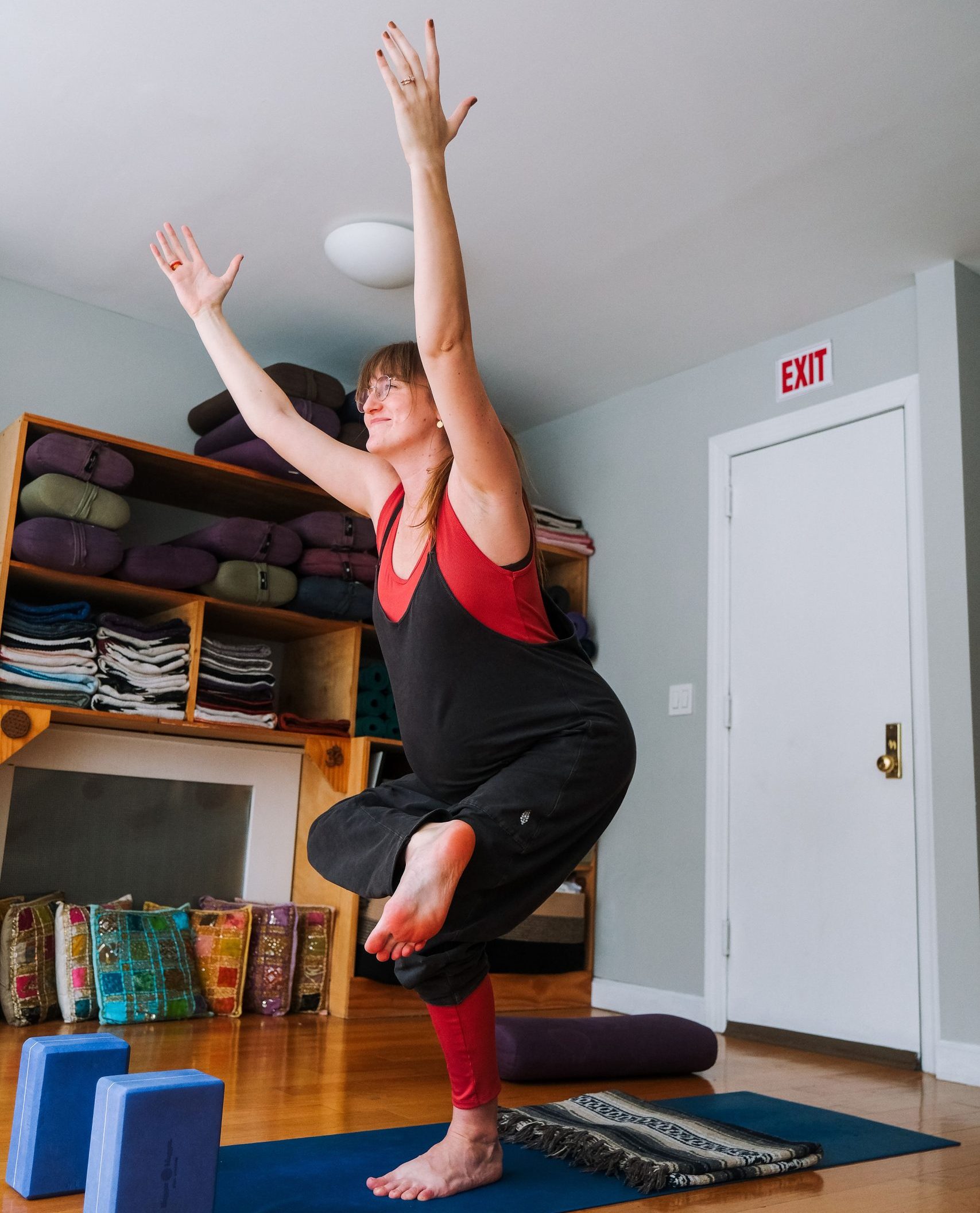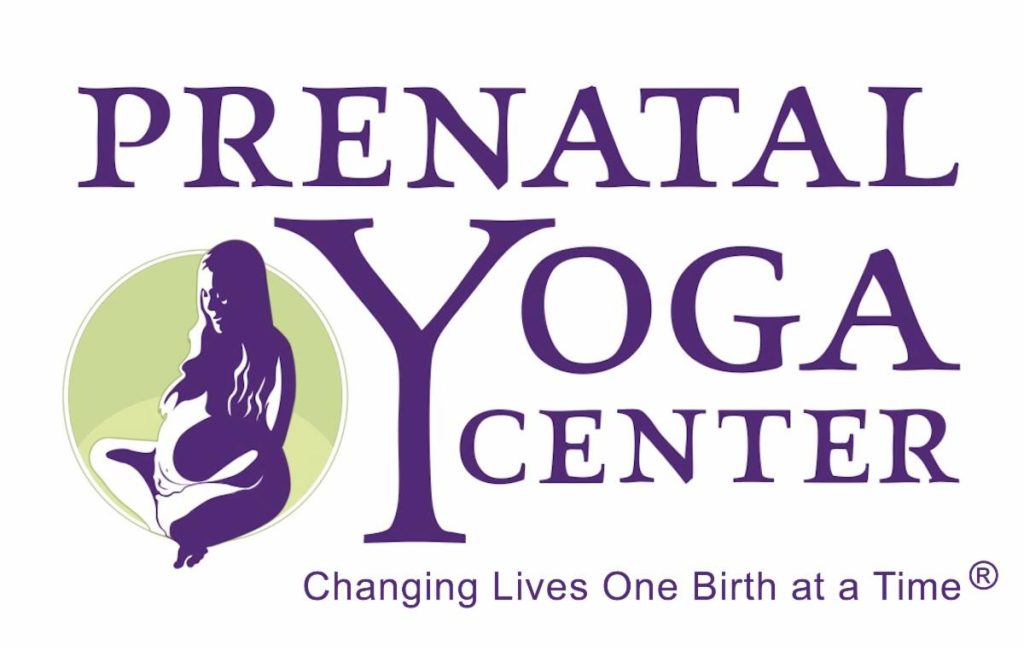“Should I practice yoga during my 1st trimester?” is a question that I am asked quite frequently. Like so many pregnancy topics, you’ll come across a variety of opinions and ideas, many of which conflict. One teacher I know believes it is inappropriate to practice during the 1st trimester, while another teacher I spoke with said it is completely fine, and you do not need to modify your practice at all until the 2nd trimester. My own feeling about this falls somewhere in the middle. I believe that you can continue your practice or even start a yoga practice in the first trimester, but there are a few modifications that I would incorporate right away.
There is also the belief that if you did an activity prior to pregnancy, you can continue to enjoy it throughout pregnancy, without changes or modifications. My problem with this theory is it is ignoring the hormonal, physiological and anatomical changes that happen to the pregnant body regardless of pre-pregnancy conditioning.
Focusing more specifically on yoga and the first trimester, students may find themselves facing the challenges of nausea and fatigue. Not every woman experiences this, but for those that do, even thinking about physical exercise may be totally out of the question. My personal experience was that yoga helped me through the nausea and fatigue. However (I stress), that is not what others may go through. Another issue that may arise relates to disclosing your pregnancy. While I think it is important to tell your yoga teacher that you are pregnant if you are still taking general classes, you may not feel ready to tell people your news.
Understanding the Hormones of Pregnancy
The heavy hitter hormones of pregnancy are estrogen, progesterone and relaxin. The levels of these hormones undergo the biggest changes and have great effects on the body. There are other changes to the endocrine system, but I am not going to focus on them since they do not directly affect one’s yoga practice in the first trimester.
Estrogen increases 1000 fold which:
-Increases blood flow
-Growth and function of uterus and breast
-Sodium and water retentions
-May influence emotional mood swings
-Increases pliability of connective tissues
Progesterone increases 10 fold which:
-Increases hypothalamus to cause fat storage
-Increases basal body temperature
-Increases amount of sodium excreted by kidneys
-Decreases gastrointestinal mobility
-Decreases smooth muscle tone of bladder, stomach, intestines, uterus, sphincters
Relaxin
-Relaxes the tendons, muscles and ligaments. This hormone facilitates the birth process by causing a softening and lengthening of the cervix and the pubic symphysis (the place where the pubic bones come together)
-Relaxin is released into the body immediately after conception and peaks at 3 months. It remains constant until labor in which there is a significant rise.
You will notice with all three of these hormones, a common denominator is that in some manner or another, there is instability being created in the body by the softening of connective tissue, ligaments and tendons and smooth muscle tone. This, of course, is necessary to create the space for the growing baby, placenta and uterus. However, because of this “loosening” effect on the body, it is important to be mindful of one’s yoga practice, even early on.
Recommended Modification
Modifying one’s yoga practice in the first trimester can seem a bit odd to some since to the outsider, there is little visible physical change. But the body is undergoing huge changes. As mentioned above, there are already tremendous hormonal surges that affect the mom-to-be. Additionally, the focus should be on implantation of the fetus and proper attachment of the placenta, while not over taxing the fatigued body. This stage of pregnancy is considered the most delicate because the risk of miscarriage is at it’s highest.
Remember even if you are an experienced yogini, the body changes regardless of your past experience. What the past experience will offer is a deeper intuitive sense of being able to listen to your body- but it is important not to let the ego lead instead of the physical sensations.
That said, here are some mindful modifications for the first trimester mama:
Prone poses. Certain belly down poses are fine, like bhujangasana (cobra pose), as long as the practitioner is grounding the pubic bone and elongating through the lower back and actively using her legs, the lower belly is not getting direct pressure. However poses like danurasana (bow pose) and salambhasana (locust pose) both put direct pressure on the uterus and should be avoided.
Deep twists. This family of poses is wonderfully therapeutic for the nonpregnant body since it provides an excellent means of compressing the internal organs which stimulates and cleanses the organs. Even though the uterus is still fairly small and situated in the pelvis, I recommend avoiding deep belly twists. Instead focus on twists of the upper back, keeping the “baby” pointing forward and twisting above the bra strap line.
Deep backbends. These poses should also be approached with caution since they too, compress the uterus and can over stretch the abdominal muscles.
Jumps and jerky movements. These movements can disturb implantation.
Abdominal strengtheners. At the Prenatal Yoga Center, we do not teach abdominal work to first trimester students. My reason being, that during the first trimester there is the high incidence of miscarriage. I have never come across data that states abdominal work will cause miscarriage, but I know that many women are protective of their belly region and concerned about any hardening activity of this area. I would not want anyone, should they suffer the loss of their pregnancy, to think that the ab work they did somehow caused the miscarriage.
We do focus quite a bit on transverse abdominal work in the second and third trimester. We believe abdominal work at this time in pregnancy aids and prepares the mother for the second stage of labor (pushing) and supports the back as the uterus continues to grow.
Certain pranayamas. Avoid pranayamas that involve breath retention and deep forceful movements of the belly like kapalabhati or bhastrika (bellows breath) Alternate nostril breathing is fine as long as you DO NOT add retention. Ujjiyi breath should not be practiced if the mucus membranes are swollen causing stuffiness. Most laboring women breathe in through their nose and out through their mouth. Since the one of the focuses of prenatal yoga is to help prepare for labor, I encourage the students to practice mouth breathing in their asana practice since it will be familiar to them for their labor and birth.
This may seem like quite a long list of poses to avoid during your first trimester, but there are still many amazing poses to enjoy. This may also be a great time to explore restorative poses, especially if you are suffering from morning sickness and fatigue. I would also highly recommend, if you are still going to non-prenatal yoga classes during your first trimester, you find a teacher that is trained in the contraindications of pregnancy. Even though you are now armed with a list of poses to modify, your teacher can help offer your alternative poses so you can still be actively involved with the flow of the class.
Personally, as I embarked on this new approach to my yoga practice, I was a bit conflicted about how I felt watching my classmates enjoy and grapple with poses I once loved. Soon I started to embrace the opportunity not to push myself so hard and acknowledged this is all part of the path towards motherhood.
Sources
Holistic Midwifery by Anne Frye






